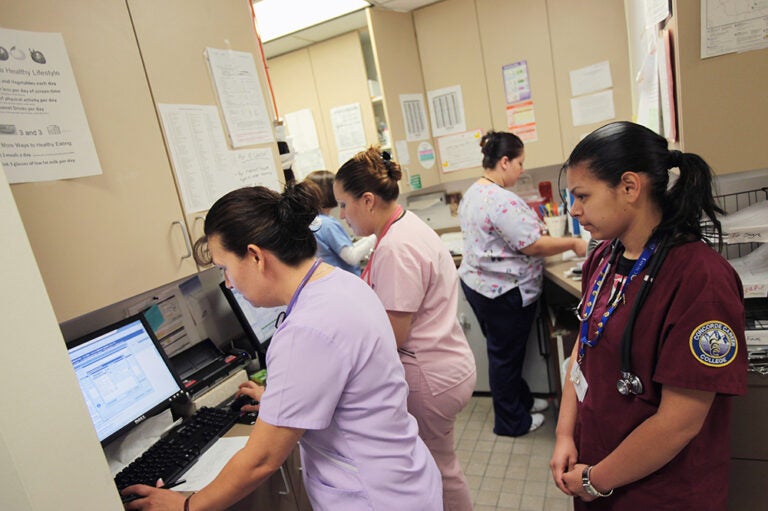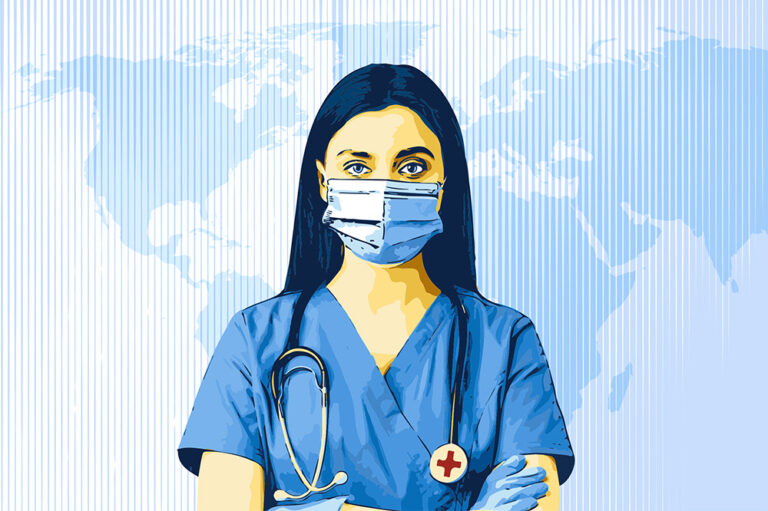A number of provisions in the bipartisan Infrastructure Investment and Jobs Act and the House-passed Build Back Better bill aim to lower prescription drug costs. In evaluating those proposals, it is useful to consider the trajectory of drug prices over the last few decades and the factors that determine prescription drug costs. A recent report by the Congressional Budget Office (CBO) examined drug prices from 1980 to 2018 and provides insightful context on those trends, including the relationship to our budget and fiscal outlook.
In the coming years, it will be important for policymakers to look for ways to ensure that life-saving and life-improving medications are affordable and available for Americans, and at the same time, ease pressure on our unsustainable fiscal outlook.
Trends in Spending on Prescription Drugs Since 1980
Retail prescription drugs are filled by pharmacies and include both brand-name and generic drugs. Nationwide spending on such drugs has increased substantially since 1980. That increase is in large part due to the introduction of new drugs that offer wide-ranging benefits, including reducing the need for services provided by physicians and hospitals, improving quality of life, and extending life. As a result, the share of healthcare spending on prescription drugs has increased while the share of spending on medical services has decreased.
In inflation-adjusted 2018 dollars, nationwide per capita spending on retail prescription drugs has increased more than sevenfold, from $140 in 1980 to $1,073 in 2018.
Despite the growth over the longer term in spending on prescription drugs, year-over-year growth rates have varied as the industry has evolved.
- Spending grew most rapidly between 1995 and the mid-2000s, as numerous “blockbuster drugs” were introduced. Blockbuster drugs are prescription drugs that generate at least $1 billion in annual sales and generally offer treatments for common health conditions, including high cholesterol, high blood pressure, acid reflux, and depression.
- Beginning in the mid-2000s, spending on prescription drugs began to fall. As patents on many brand-name drugs expired, generic alternatives were offered, which simultaneously reduced drug prices and increased accessibility. In 2006, the Medicare Part D program was created, which both expanded drug accessibility and introduced a benefit structure that incentivized enrollees to choose less expensive generic drugs.
- At the end of 2013, a new class of specialty drugs that treat Hepatitis C was introduced and temporarily caused total prescription drug spending to grow for a couple of years.
- Since 2015, spending on prescription drugs has remained relatively stable.
Government Spending on Prescription Drugs
In the United States, most government spending on retail prescription drugs comes from Medicare Part D and Medicaid:
- Medicare Part D is an optional program to assist Medicare beneficiaries with paying for retail prescription drugs. The program primarily serves Americans over age 65 and benefits are provided by private insurance plans that receive premiums from both the government and Medicare enrollees. Program enrollees are more likely than the general population to have chronic conditions that require prescriptions to be filled on an ongoing basis. In 2018, the average Medicare Part D enrollee filled 54 prescriptions and total program spending on prescription drugs was $120 billion.
- Medicaid is a health insurance program for lower-income recipients that is jointly financed by the federal and state governments. Medicaid enrollees are generally younger and healthier than Medicare enrollees, and as a result, do not generally require medication to be prescribed on an ongoing basis. In 2018, the average Medicaid enrollee filled 11 prescriptions and total program spending on prescription drugs was $32 billion.
Those two programs not only account for the majority of government spending on retail prescription drugs, but also comprise a large share of all U.S. spending in that category. In 2018, Medicare Part D and Medicaid beneficiaries were responsible for about 45 percent of nationwide spending on retail prescription drugs as measured in the National Health Expenditure Accounts.
After adjusting for inflation, the average retail price of prescription drugs has been relatively stable. The average retail price of a prescription for a Medicare Part D beneficiary increased slightly between 2009 and 2018, from $64 to $69 (in 2018 dollars). The average retail price of a prescription for a Medicaid beneficiary fell by $1 during that period, from $99 to $98.
That stabilization in average retail prices masks a number of competing factors that determine the average price of prescription drugs. One important determinant is whether a prescription is sold as a brand-name or generic drug. Brand-name drugs are sold under a specific name or trademark that is protected by a patent. Generic drugs, on the other hand, have the same active-ingredient formula and are just as safe and effective as their brand-name counterpart, but are not protected by a patent. Patent protections give a drug manufacturer monopolistic control over the price of a brand-name drug while companies often compete with one another in selling generic drugs. As a result, generic drugs are generally far cheaper than brand-name drugs.
Since 2009, the average retail price of brand-name prescription drugs has more than doubled in inflation-adjusted dollars. During that same period, the average retail price of generic prescription drugs has actually decreased.
The reason that the average retail price of all prescription drugs has stabilized is because Americans are increasingly being prescribed generic drugs, which have far lower costs. In fact, the number of brand-name prescriptions has remained relatively constant for Medicare Part D beneficiaries — and even decreased for Medicaid beneficiaries — while the number of generic drug prescriptions has more than doubled.
That data demonstrates that the average price and usage of prescription drugs has varied significantly among generic and brand-name drugs for Medicare Part D and Medicaid beneficiaries. Although a nationwide dataset on prescription drug pricing is not readily available, CBO estimates that the average price of prescription drugs for the rest of the U.S. population likely lies between the figures presented for Medicare Part D and Medicaid beneficiaries.
Prescription Drug Prices in the Future
Over the last two decades, inflation-adjusted spending on prescription drugs has been controlled through the widespread adoption of generic drugs. Today, generic drugs account for 90 percent of all prescriptions.
CBO projects that further increases in the use of generic drugs are unlikely because they are already so prevalent and because new prescription drugs are likely to be biologics (drugs that are produced from living organisms). Those drugs are more complex and harder to manufacture, and as a result, there may be fewer generics developed when their patents expire. That means that Americans may be on the hook for more expensive brand-name drugs.
As such, policy changes to control increases in prescription drug prices are likely to be important. The Committee for a Responsible Federal Budget recently analyzed a number of proposals aimed at reducing drug prices in the Build Back Better bill which have the potential to lower healthcare costs and reduce the deficit by $303 billion over a decade by:
- Allowing limited government negotiation of certain drugs in Medicare Part B (which covers medically necessary and preventive services) and Medicare Part D
- Limiting prescription drug price increases to the rate of inflation for drugs in Medicare Parts B and D and in the commercial insurance market
- Redesigning the Medicare Part D benefit formula
- Capping the monthly copayment of insulin for Medicare beneficiaries and private insurers
- Increasing rebate transparency for Pharmacy Benefit Managers (PBMs)
- Repealing the Trump Administration’s drug rebate rule that eliminates safe harbor protections for Medicare Part D rebates
Prescription drugs have been key to allowing Americans to lead longer, healthier lives. But, those health benefits are most meaningful when they are affordable and accessible. Lawmakers should consider how recent trends in prescription drug spending, usage, and prices can inform policies that will protect both consumers and our fiscal trajectory.
Image credit: Photo by Andersen Ross/Getty Images
Further Reading
Quiz: How Much Do You Know About Healthcare in the United States?
The United States has one of the largest and most complex healthcare systems in the world. Take our healthcare quiz to see how much you know about the cost and quality of the U.S. healthcare system.
How Did the One Big Beautiful Bill Act Change Healthcare Policy?
The OBBBA adds significantly to the nation’s debt, but its healthcare provisions lessen that impact by $1.0 trillion.
Infographic: U.S. Healthcare Spending
Improving our healthcare system to deliver better quality care at lower cost is critically important to our nation’s long-term economic and fiscal well-being.


